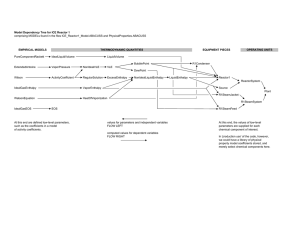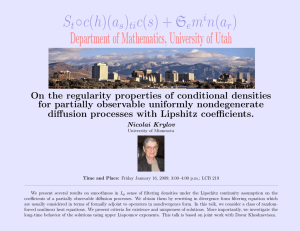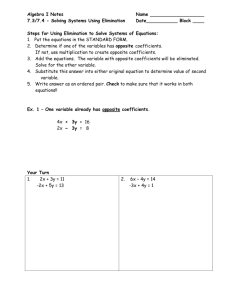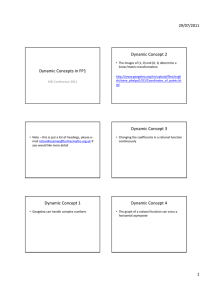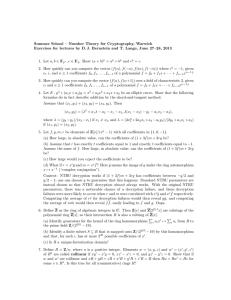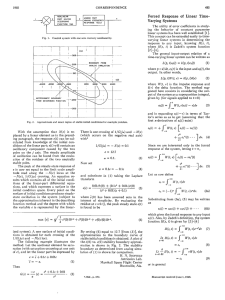Exercise on order and series coefficients
advertisement
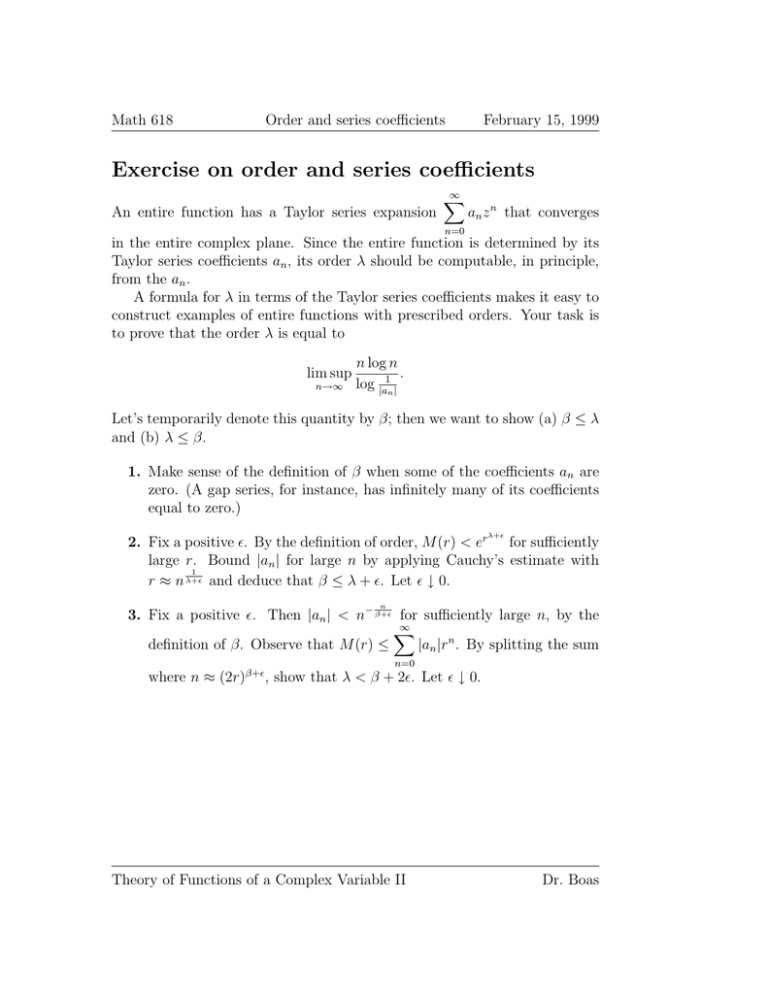
Math 618 Order and series coefficients February 15, 1999 Exercise on order and series coefficients An entire function has a Taylor series expansion ∞ X an z n that converges n=0 in the entire complex plane. Since the entire function is determined by its Taylor series coefficients an , its order λ should be computable, in principle, from the an . A formula for λ in terms of the Taylor series coefficients makes it easy to construct examples of entire functions with prescribed orders. Your task is to prove that the order λ is equal to lim sup n→∞ n log n . log |a1n | Let’s temporarily denote this quantity by β; then we want to show (a) β ≤ λ and (b) λ ≤ β. 1. Make sense of the definition of β when some of the coefficients an are zero. (A gap series, for instance, has infinitely many of its coefficients equal to zero.) λ+ 2. Fix a positive . By the definition of order, M (r) < er for sufficiently large r. Bound |an | for large n by applying Cauchy’s estimate with 1 r ≈ n λ+ and deduce that β ≤ λ + . Let ↓ 0. n 3. Fix a positive . Then |an | < n− β+ for sufficiently large n, by the ∞ X definition of β. Observe that M (r) ≤ |an |rn . By splitting the sum n=0 where n ≈ (2r)β+ , show that λ < β + 2. Let ↓ 0. Theory of Functions of a Complex Variable II Dr. Boas

